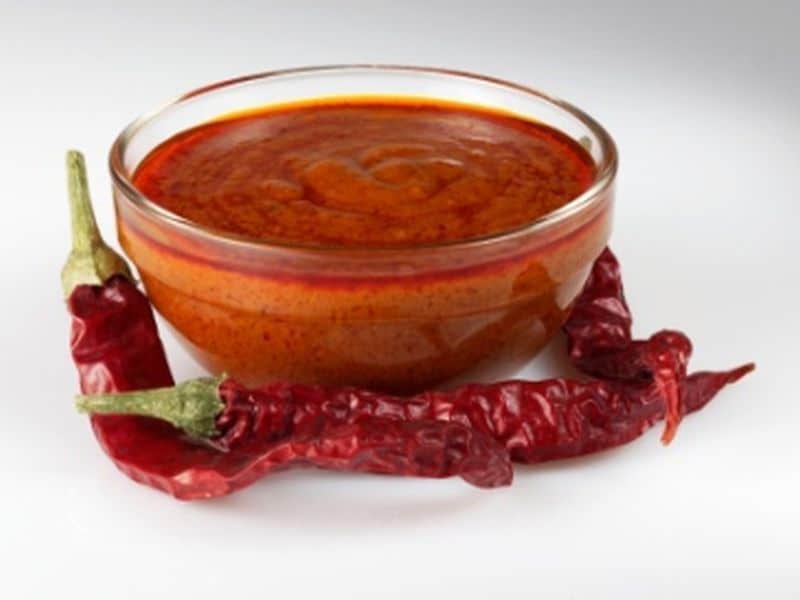A Comprehensive Guide to Chili Sauce
Introduction:
Chili sauce, also known as hot sauce or pepper sauce, is a popular condiment enjoyed worldwide for its ability to add a fiery kick to various dishes. Made from fresh chili peppers or a mixture of chilies, chili sauce comes in a wide array of flavors, spice levels, and styles, making it a versatile and indispensable ingredient in many cuisines. This article provides an in-depth overview of chili sauce, including its history, types, ingredients, production processes, health benefits, and popular uses in diverse recipes.
I. Historical Overview:
– The origins of chili sauce can be traced back to ancient civilizations, with evidence of chili consumption dating back thousands of years.
– Chili peppers were first cultivated in Central and South America, and they quickly spread across the globe through trade and exploration.
– The use of chili in sauces gradually became a global phenomenon, with various regions and cultures developing their own unique versions and variations.
II. Types and Varieties:
1. Traditional Chili Sauces:
– Tabasco Sauce: Originating from Louisiana, this sauce is made from fermented tabasco peppers, vinegar, and salt. It is known for its tangy and spicy flavor.
– Sriracha Sauce: A popular sauce in Thai and Vietnamese cuisines, Sriracha is made from chili peppers, vinegar, garlic, sugar, and salt. It offers a balanced sweet and spicy profile.
– Harissa: Hailing from North Africa, harissa is a fiery sauce made from roasted red peppers, spices, garlic, and olive oil. It is commonly used in Mediterranean and Middle Eastern dishes.
2. Regional Chili Sauces:
– Chipotle Sauce: Popular in Mexican cuisine, this sauce is made from smoked chili peppers, typically the jalapeno variety. It delivers a distinct smoky flavor with medium heat.
– Sambal Oelek: A staple in Indonesian and Malaysian cooking, sambal oelek is made from red chili peppers, vinegar, garlic, and salt. It provides a rich, spicy taste.
– Gochujang: A fundamental ingredient in Korean cuisine, gochujang is a fermented chili paste made from red chili peppers, glutinous rice, soybeans, salt, and sweeteners. It adds a spicy, umami kick to dishes.
III. Ingredients and Production Processes:
1. Chili Peppers:
– Different varieties of chili peppers are used to create distinct flavors, heat levels, and colors in chili sauce.

– Common types include jalapeno, habanero, cayenne, poblano, serrano, bird’s eye chili, and Scotch bonnet.
2. Additional Ingredients:
– Vinegar: Used as a preservative and to balance the spiciness, different types of vinegar, such as white vinegar, apple cider vinegar, or rice vinegar, can be used.
– Salt: Enhances the flavor and acts as a natural preservative.
– Sugar: Often added to balance the heat and acidity, as well as to add a touch of sweetness.
3. Production Process:
– The chili peppers are harvested, washed, and sometimes roasted or smoked to develop specific flavors.
– The peppers are then blended with vinegar, salt, sugar, and other ingredients, depending on the desired flavor profile.
– The mixture is cooked, pureed, and strained to achieve a smooth consistency.
– Some chili sauces undergo a fermentation process to develop complex flavors and enhance the sauce’s shelf life.
IV. Health Benefits:
1. Capsaicin Content:
– The main active compound in chili peppers responsible for their spiciness is capsaicin.
– Capsaicin has been associated with various health benefits, including pain relief, improved cardiovascular health, and increased metabolism.
2. Rich in Vitamins and Minerals:
– Chili peppers used in chili sauce are a good source of vitamins A, C, and E, as well as minerals like potassium and iron.
3. Antimicrobial Properties:
– The capsaicin compound in chili peppers exhibits antimicrobial properties, which may help fight against certain bacteria and fungi.
4. Weight Management:

– The spiciness of chili sauce can aid in weight management by reducing appetite and increasing satiety.
V. Culinary Applications:
1. Dips and Condiments:
– Chili sauce serves as a delicious accompaniment to various appetizers, ranging from samosas and spring rolls to chicken wings and nachos.
– It can be used as a dipping sauce by itself or mixed with other ingredients such as mayonnaise or yogurt.
2. Marinades and Glazes:
– Chili sauce adds depth and heat to marinades for proteins like chicken, beef, seafood, or tofu.
– The sweet and spicy profile of certain chili sauces can be used as a glaze for grilled or roasted dishes.
3. Flavor Enhancer:
– A few drops of chili sauce can elevate the taste of soups, stews, curries, and stir-fries, giving them a vibrant and spicy twist.
4. Pizza and Pasta:
– Chili sauce can be drizzled over pizzas, added to pasta sauces, or incorporated into spicy arrabbiata dishes.
5. Global Cuisine:
– Chili sauce is an essential ingredient in dishes from various cuisines, including Mexican, Thai, Chinese, Korean, Indian, and Caribbean.
Conclusion:
Chili sauce stands as a beloved condiment, cherished for its ability to add heat and flavor to countless culinary creations. Whether used as a dip, marinade, glaze, or flavor enhancer, chili sauce has the power to transform ordinary meals into extraordinary ones. With its rich history, diverse types, and health benefits, chili sauce is a must-have pantry staple for spice enthusiasts and food lovers alike.1. Market Trends and Growth Opportunities:
The global chili sauce market has witnessed steady growth in recent years, driven by the increasing popularity of spicy and flavorful cuisines. Factors such as globalization, changing food preferences, and growing multicultural influences have contributed to the surge in demand for chili sauce. Furthermore, rising consumer awareness about the health benefits of chili peppers and the versatility of chili sauce in various recipes have also fueled market growth. With the expanding popularity of international cuisines and the increasing demand for spicy flavors, the chili sauce industry is expected to continue its upward trajectory.
2. Competitive Landscape:
The chili sauce market is highly competitive, with numerous players vying for market share. Established brands such as Tabasco, Sriracha, and Cholula dominate the market, while smaller artisanal and regional producers cater to niche markets. To stay ahead in this competitive landscape, companies focus on product innovation, unique flavor profiles, and sustainable packaging solutions. Additionally, marketing strategies such as celebrity endorsements, social media campaigns, and collaborations with restaurants and food manufacturers help companies establish their brands and gain a competitive edge.

3. Packaging and Labeling:
Packaging plays a crucial role in the chili sauce industry, as it not only protects the product but also embodies brand identity and attracts consumers. Most chili sauce products are packaged in glass bottles or plastic squeeze bottles, ensuring freshness and ease of use. Labels on chili sauce bottles often feature bold and eye-catching designs, emphasizing the brand name, chili heat level, and key ingredients. Additionally, companies are increasingly adopting environmentally friendly packaging options, such as recyclable materials and reduced plastic usage, to address consumer concerns about sustainability.
4. Distribution Channels:
Chili sauce products are distributed through various channels, including supermarkets, hypermarkets, convenience stores, online platforms, and foodservice outlets such as restaurants and cafeterias. Supermarkets and hypermarkets account for the majority of chili sauce sales, given their wide product range and accessibility. However, the e-commerce sector has witnessed rapid growth, providing consumers with the convenience of ordering chili sauce online. The foodservice sector also presents significant opportunities for chili sauce manufacturers, as restaurants incorporate the condiment into their menus to cater to the growing demand for spicy flavors.
5. Export and Import Dynamics:
Chili sauce is a globally cherished condiment, and the export and import dynamics play a significant role in the market’s growth and development. Countries known for their chili sauce production, such as the United States, Thailand, Mexico, China, and India, export their products to regions where spicy cuisine is widely enjoyed. The United States, for instance, exports its popular brands like Tabasco and Sriracha to various countries, while Thailand exports its renowned Sriracha sauce to international markets. On the other hand, countries that rely heavily on chili sauce imports include those with less access to chili pepper cultivation or with a strong demand for foreign cuisine.
6. Consumer Preferences and Demographics:
Consumer preferences for chili sauce can vary based on factors such as regional tastes, cultural influences, and heat tolerance levels. While some consumers seek extremely spicy chili sauces to enhance their meals, others prefer milder options that add flavor without overpowering the dish. Additionally, demographic factors such as age, ethnicity, and culinary experiences can influence individual preferences for specific types of chili sauce. For instance, younger consumers may be more inclined towards experimental flavors and global cuisine, while older consumers may prefer traditional and familiar products.
7. Quality Control and Food Safety:
Ensuring food safety and maintaining consistent quality are vital concerns for chili sauce manufacturers. To meet stringent quality standards, companies implement rigorous quality control procedures throughout the production process. This includes sourcing fresh and safe chili peppers, adhering to strict hygiene practices, conducting regular quality checks, and complying with food safety regulations. Implementing certifications such as ISO 22000 or HACCP further enhances consumer trust and confidence in the brand.
8. Health and Wellness Trends:
The growing emphasis on health and wellness has influenced the chili sauce market, leading to the development of healthier and cleaner ingredient formulations. Manufacturers are increasingly incorporating natural and organic ingredients, reducing sugar and sodium content, and avoiding artificial additives in their chili sauce products. Additionally, the rising demand for gluten-free, vegan, and allergen-free options has prompted companies to cater to these specific dietary preferences, expanding their consumer base and market reach.
9. Culinary Innovations and Fusion Flavors:
Innovative culinary experiences play a crucial role in driving the chili sauce market forward. Chefs and food enthusiasts experiment with chili sauce to create fusion flavors and unique combinations, incorporating it into traditional recipes from different cuisines. For instance, chili sauce-infused cocktails, marinades, desserts, and even ice cream have gained popularity in recent years. Such culinary innovations and collaborations with renowned chefs contribute to the overall growth and evolution of the chili sauce industry.
10. Sustainability and Social Responsibility:
As consumer awareness regarding sustainability increases, chili sauce manufacturers are placing greater emphasis on sustainable sourcing, production processes, and packaging. This includes supporting local farmers, implementing eco-friendly farming practices, and reducing water and energy consumption in production facilities. Additionally, companies are actively involved in social responsibility initiatives, such as supporting community projects and providing aid to regions affected by natural disasters.
Conclusion:
Chili sauce continues to captivate taste buds around the world and occupies a prominent place in the culinary landscape. With its diverse flavors, versatile applications, and health benefits, it has become an integral part of global cuisines. As the chili sauce market continues to expand, manufacturers need to adapt to evolving consumer preferences, implement sustainable practices, and focus on innovation to stay ahead. By understanding market trends, demographics, and competitive dynamics, businesses in the chili sauce industry can capitalize on opportunities and cater to the ever-growing demand for this beloved condiment.









